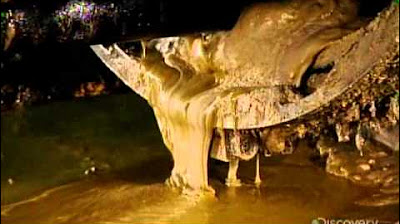Kimia Industri Proses Pembuatan Minyak Jagung Bag 1 Pendahuluan
Summary
TLDRThis video explains the detailed process of corn oil production, from cleaning and grinding the corn to extracting and refining the oil. It highlights the nutritional benefits of corn, with its seeds, stalks, and leaves serving various uses, including as animal feed and medicinal products. The process involves steps like pressing the germ to extract oil, refining to remove impurities, bleaching to clarify the oil, and deodorizing to eliminate odors. The final product is then cooled, filtered, and packaged for distribution, providing viewers with a thorough understanding of the production and benefits of corn oil.
Takeaways
- 😀 Corn is a versatile plant with many uses. Its seeds contain carbohydrates, fats, proteins, minerals, water, and vitamins, which are important for energy, tissue formation, and biochemical reactions in the body.
- 🌽 The stalks and young leaves of corn are used as livestock feed and green fertilizer, while the cobs and husks serve as animal feed and fuel.
- 💊 Corn hair (silk) has medicinal uses, such as treating diabetes and high blood pressure.
- 🧬 The corn seed consists of several parts: germ (embryo), pericarp (skin), starch, and gluten, with the germ being rich in oil.
- 🛢️ Corn oil is extracted from the corn germ, which contains 22-28% oil, compared to just 3% oil in the entire corn kernel.
- 🔬 The main component of corn oil is linoleic acid, which makes up 34-62% of its content.
- 🔧 The first step in the corn oil production process is cleaning, which involves drying, grinding, and removing fiber using air pressure.
- 💨 The second step is softening, where sulfur dioxide and water are added to the ground corn to break it down and form sugars like dextrin and glucose.
- 🌀 The third step, called 'steg', separates sugars (like glucose and dextrin) from the remaining corn materials.
- 💥 The fourth step involves separating the germ from the rest of the corn. This is done in two stages to ensure the germ is pure and free from impurities.
- 🧳 The fifth step is pressing the corn germ to extract the oil, which is followed by filtration to remove impurities.
- ⚗️ The oil is then refined in the next stages, which include neutralization (using sodium hydroxide to reduce free fatty acids), bleaching (to remove color using activated charcoal), deodorization (to remove unwanted smells), and cooling before the final filtration.
- 📦 After the final filtration and cooling, the corn oil is ready for packaging and distribution to consumers.
Q & A
What are the main nutrients found in corn seeds?
-Corn seeds contain carbohydrates, fats, proteins, minerals, water, and vitamins, which serve as sources of energy, help form body tissues, regulate functions, and support biochemical reactions in the body.
What are some uses of the different parts of the corn plant?
-The stalks and young leaves of corn are used for animal feed and as green manure. The husk and cobs can also be used as animal feed or as biofuel. The corn silk is used in traditional medicine to treat conditions like diabetes and high blood pressure.
What part of the corn plant contains the highest oil content?
-The germ of the corn seed contains the highest oil content, ranging from 22-28%.
What is the primary fatty acid found in corn oil?
-The primary fatty acid in corn oil is linoleic acid, which constitutes 34-62% of the oil.
How is corn oil extracted from the corn germ?
-Corn oil is extracted from the corn germ either through solvent extraction or by pressing the germ. The pressing method involves mechanically squeezing the oil from the germ.
What happens during the 'cleaning' stage of corn oil production?
-During the cleaning stage, the corn is dried, ground, and then cleaned to remove any fiber and debris. Air is blown into the grinding equipment to further separate the unwanted fibers.
What is the purpose of soaking the corn in sulfur dioxide and water?
-Soaking the corn in sulfur dioxide (SO2) and water helps soften the ground corn, which facilitates the breakdown of starch into sugars and helps with the extraction of the oil.
What is 'refining' in the context of corn oil production?
-Refining is the process of purifying the extracted oil by removing free fatty acids. This is done by adding sodium hydroxide (NaOH) for saponification, which neutralizes the acids and produces glycerol and soap as by-products.
What is the purpose of 'bleaching' the corn oil?
-The bleaching stage is designed to improve the appearance of the oil by removing unwanted color impurities. This is typically done using activated charcoal or fuller’s earth.
Why is deodorization necessary in corn oil production?
-Deodorization is necessary to remove any undesirable smells from the oil. This is typically achieved by using steam to distill out volatile compounds responsible for the odors.
Outlines

Этот раздел доступен только подписчикам платных тарифов. Пожалуйста, перейдите на платный тариф для доступа.
Перейти на платный тарифMindmap

Этот раздел доступен только подписчикам платных тарифов. Пожалуйста, перейдите на платный тариф для доступа.
Перейти на платный тарифKeywords

Этот раздел доступен только подписчикам платных тарифов. Пожалуйста, перейдите на платный тариф для доступа.
Перейти на платный тарифHighlights

Этот раздел доступен только подписчикам платных тарифов. Пожалуйста, перейдите на платный тариф для доступа.
Перейти на платный тарифTranscripts

Этот раздел доступен только подписчикам платных тарифов. Пожалуйста, перейдите на платный тариф для доступа.
Перейти на платный тарифПосмотреть больше похожих видео
5.0 / 5 (0 votes)






